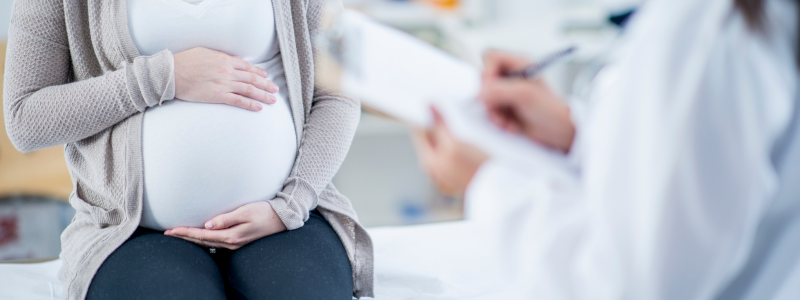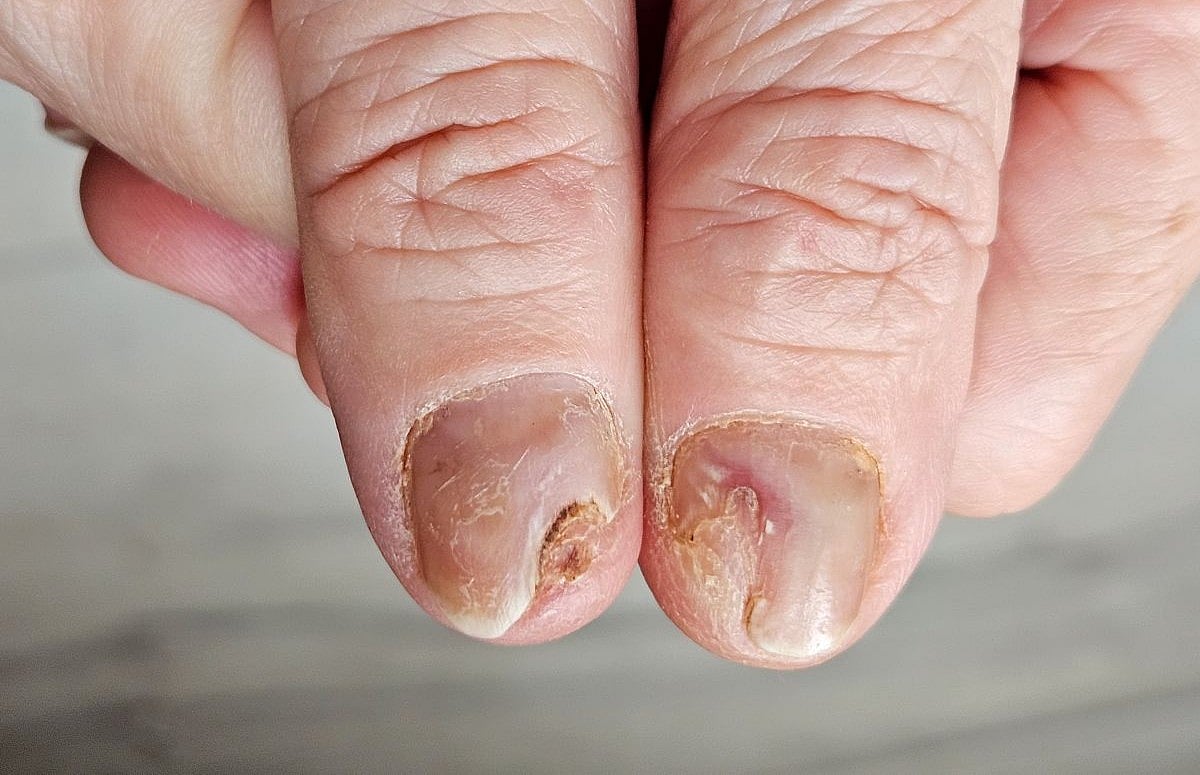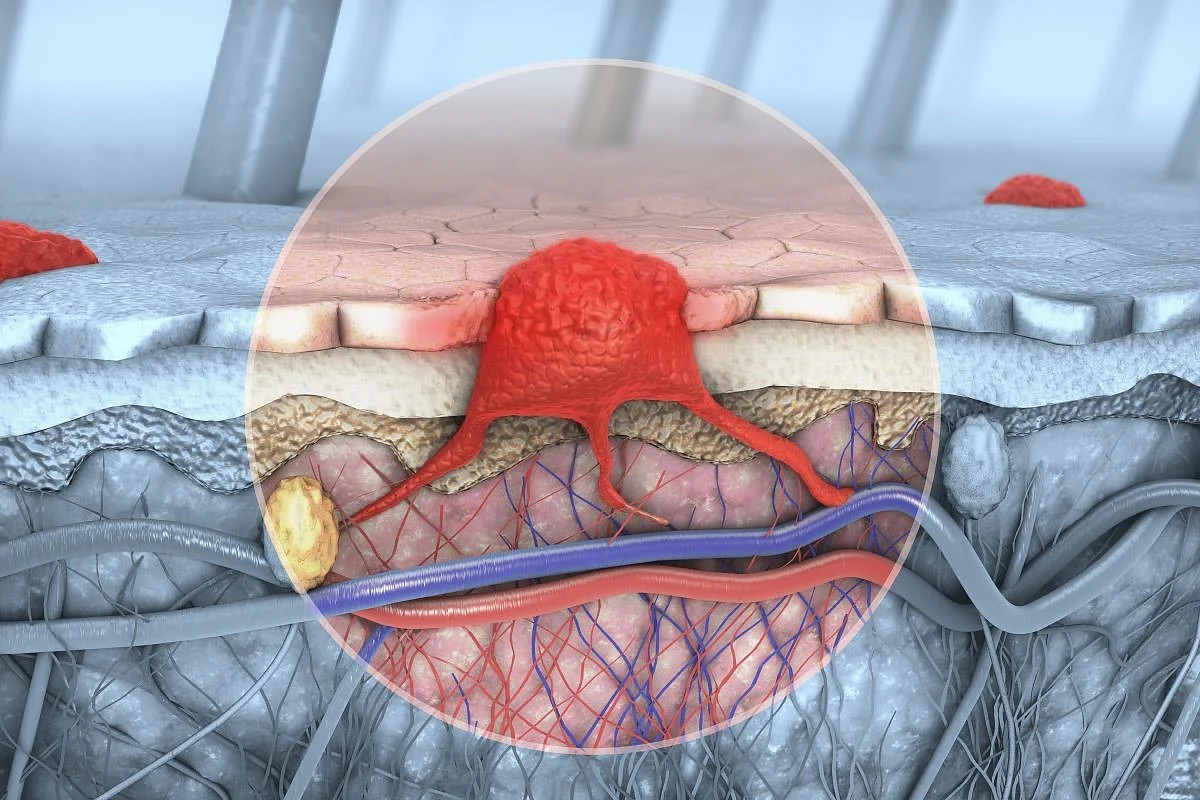Hidradenitis suppurativa (HS) is a chronic inflammatory condition characterized by the formation of recurrent abscesses, nodules, tunnels, and scarring. Although the etiology of HS is multifactorial and not yet fully understood, hormonal dysregulation is thought to play a role in the pathogenesis. This hypothesis is supported by a frequent post-pubertal onset of symptoms, perimenstrual flares, and a strong association with polycystic ovarian syndrome [1]. Furthermore, hormonal modulators such as spironolactone, finasteride, and oral contraceptive pills have shown benefit in patients with HS [2]. Based on current epidemiologic data, HS appears to disproportionately affect women of child-bearing age in the USA [3]. Nearly half of pregnancies are unintended, which highlights the importance of routinely counseling female individuals of reproductive age on medication safety and the potential impacts their treatments may have on pregnancy [4]. The literature suggests that there are currently practice gaps in the care of pregnant individuals with HS. A survey study of 59 women with HS found that the majority had not received information from their physician on how their disease and medications could impact pregnancy outcomes [5]. More than half desired more counseling on HS and pregnancy from their provider [5]. Furthermore, a single-center retrospective cohort study of 127 patients found that dermatologists were involved in HS care for only 14.4% of the pregnancies. Patients managed by a dermatologist during pregnancy were more likely to receive an HS therapy or procedure when compared with those who were not [6]. Dermatologists play a crucial role in the management of HS and are especially key when optimizing HS during pregnancy. This paper aims to provide an updated review of the management of HS during pregnancy and breastfeeding with an emphasis on safety data (Table 1).
Disease Fluctuations and Pregnancy Outcomes
Fluctuations in HS disease activity have been noted during pregnancy. A systemic review and meta-analysis of eight studies found that while HS activity during pregnancy improved in 24% of patients and worsened in 20%, the majority of patients had continued disease activity. Postpartum flares affected 60% (99/164) of women with HS [1]. Given the large proportion of patients who are likely to experience disease activity, a close follow-up with a dermatologist is critical for appropriate HS care during pregnancy [1].
Individuals with HS may be at increased risk for adverse maternal and fetal outcomes. A retrospective cohort study of The United States’ Healthcare Cost and Utilization Project-Nationwide Inpatient Sample database found an increased risk of preeclampsia, cesarean sections, and congenital anomalies among pregnant patients with HS [7]. Another retrospective cohort study of 1862 HS pregnancies reported HS as an independent risk factor for spontaneous abortion, gestational diabetes mellitus, and cesarean section [8]. Limitations of these database studies include an inability to evaluate the influence of disease activity or severity during pregnancy or impact of medical treatment of HS on pregnancy outcomes.
Medical Management of Hidradenitis Suppurativa During Pregnancy and Lactation
Topical Therapies Generally Considered Compatible with Pregnancy
Benzoyl Peroxide Wash
Benzoyl peroxide wash, a commonly used first-line HS topical, is generally considered compatible with pregnancy and lactation [9]. Benzoyl peroxide metabolizes to benzoic acid, a food additive, and has minimal systemic absorption [10]. Benzoyl peroxide is also considered safe during breastfeeding despite a lack of human safety data available [11].
Chlorhexidine Wash
Chlorhexidine wash, an antiseptic, is considered compatible with pregnancy and lactation. A randomized controlled trial of 334 women in labor who underwent vaginal washes (mean 2.6 times) and 335 liveborn neonates who were cleaned with 1% chlorhexidine supported safety and tolerability [12]. A Cochrane review including a total of 1125 infants evaluating vaginal chlorhexidine (any form, including gel or wash) use during labor did not report any infant side effects over four studies [13]. In one randomized study, 0.2% chlorhexidine in alcohol (vs distilled water) was sprayed on the breasts of 200 mothers before and after each feeding with no side effects noted in breastfed infants [14].
Topical Clindamycin
Topical clindamycin is a first-line treatment for mild-to-moderate HS. It is often paired with benzoyl peroxide to reduce development of bacterial resistance [10]. Because of its minimal absorption when applied topically, it is generally considered safe in pregnancy [9] and lactation [11]. Clindamycin 1% solution has limited systemic absorption, varying from 1% [15] to 4–5% of the drug [16]. When breastfeeding, application to breast should be avoided to minimize oral ingestion that could lead to infant diarrhea [17].
Topical Therapies to Avoid Using in Pregnancy
Topical Resorcinol
Topical resorcinol, a keratolytic with anti-inflammatory properties, is utilized by experts in the management of HS [2]. However, because of a lack of safety data in humans, resorcinol should generally be avoided in pregnant and lactating individuals [18]. One case report of a 30-week pregnant patient consuming resorcinol orally resulted in seizures, respiratory failure, and death of the fetus [19].
Topical Ruxolitinib
Topical ruxolitinib, a Janus kinase inhibitor approved for use in atopic dermatitis and vitiligo, met its primary endpoint in a randomized phase II trial for HS [20]. Ruxolitinib has not been studied in pregnant or lactating individuals. In animal studies, oral ruxolitinib exposure led to a drop in fetal weight in both rats and rabbits when exposed to 60 mg/kg/day of oral ruxolitinib [21]. Currently, it is recommended to avoid topical ruxolitinib during pregnancy and lactation because of minimal safety and efficacy data [11]. Patients should avoid breastfeeding for at least 4 weeks after last use [21].
Topical Clascoterone
Topical clascoterone, an androgen receptor inhibitor, has minimal data supporting its efficacy in HS [22] and has not been studied in pregnant women [9]. In animal studies evaluating the effects of subcutaneous clascoterone administration during organogenesis, pregnant rats had offspring with malformations, and pregnant rabbits had increased rates of post-implantation losses [23]. Patients should avoid using clascoterone during pregnancy because of limited safety data in humans. Use of topical clascoterone during lactation may be considered with caution given the limited systemic absorption and likely low concentration in breast milk [18].
Systemic Antibiotics Generally Considered Compatible with Pregnancy
Clindamycin is a common first-line antibiotic for HS and is generally considered safe during pregnancy. One study of 647 newborns exposed to clindamycin during the first trimester did not find any association between drug exposure and congenital defects [24]. Clinical trials of pregnant women taking clindamycin during the second and third trimesters did not reveal any increased frequency of congenital defects [25]. Furthermore, clindamycin demonstrated no teratogenic effects in animal studies [25]. Clindamycin is generally considered safe during breastfeeding [26]. There is one report of bloody stools in a 5-day-old infant breastfed by a mother receiving intravenous clindamycin and gentamicin [18]. Infants breastfed by mothers taking clindamycin should be monitored for side effects such as diarrhea, candidiasis, or bloody stools because of its potential effects on infant gastrointestinal flora [18].
Amoxicillin-clavulanic acid, which has data for use during HS flares [27]. (Table 2), is generally considered compatible with pregnancy, especially after the first trimester, and with lactation. Amoxicillin has been associated with an increased risk of cleft lip and/or palate with fetal exposure in the first trimester [28]; however, other studies did not establish a link between amoxicillin-clavulanic acid and birth defects [29]. One prospective controlled study of 191 pregnant women with amoxicillin-clavulanic acid exposure during the first trimester of pregnancy did not show an increased risk of major malformations [30]. A prospective study evaluating maternal drug exposure and adverse reactions of breastfed infants included 25 maternal-infant pairs exposed to amoxicillin while breastfeeding. Three infants had diarrhea, but no major infant side effects warranting medical attention occurred [31].







Leave a Reply